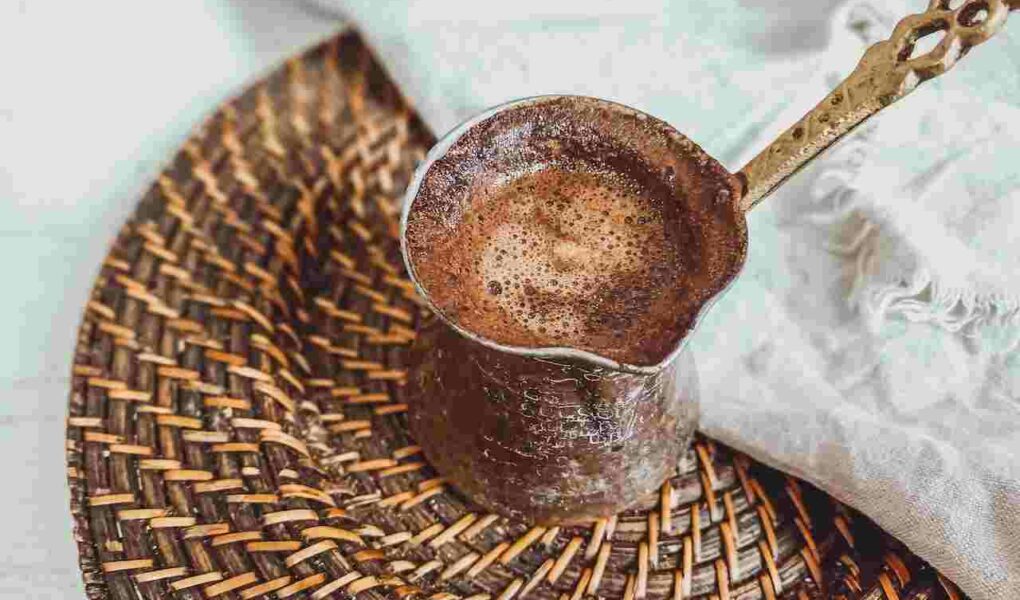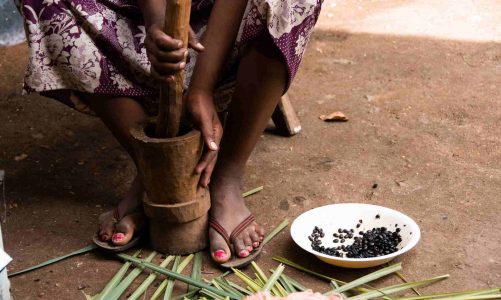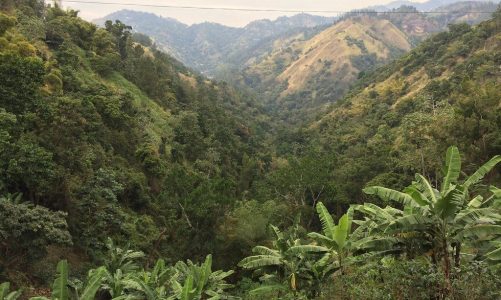If you are looking to branch out and try some new coffee, Turkish coffee might be just what you’re looking for. This ancient brewing method produces a unique, rich flavor that will transport your taste buds to a whole new level of coffee enjoyment. But if you’ve never tried it before, the process of drinking Turkish coffee can seem a bit confusing. Don’t worry, we’re here to help. In this post, we’ll walk you through everything you need to know about how to drink Turkish coffee like a true connoisseur.
Be sure to check out the top coffee drinking countries too.
What Is Turkish Coffee
Turkish coffee is a rich, traditional beverage brewed by slowly heating fine ground coffee. The finely ground coffee is added directly to cold water, which is slowly brought to nearly boiling temperatures on a heating source, such as a stove.
This slow-brewing method allows for the extraction of coffee oils and flavors that are not fully extracted by other processes. Ideally, actual boiling is avoided since that can increase unwanted bitterness. Traditional, Turkish coffee pots made of copper may be used for authenticity, but there are plenty of modern machines that can achieve the same brewing style.
Traditional Turkish coffee pots are called “cezve”. Also, the use of sugar may vary depending on the situation and personal preference. Varying amounts of sugar may be added to the water before brewing for sweeter styles of Turkish coffee, or it may be left unsweetened.
The final product is a thick and flavorful coffee beverage. The brewing process leaves a dark foam at the top of the cup, reminiscent of some espresso beverages. Since the process is filter-less, sediment at the bottom of a cup is normal. The leftover sediments are traditionally used in a variety of ways.
How to Drink Turkish Coffee

Like many other cultures, drinking Turkish coffee is considered a social experience. It is a beverage included in everything from casual meetings with friends to celebratory weddings. It is best to enjoy a thoughtful conversation with friends and family while enjoying a cup of Turkish coffee.
When serving Turkish coffee, it is important to serve the eldest person first as a sign of respect. As far as timing is concerned, Turkish coffee is generally an afternoon or evening beverage, with mornings reserved for tea. While Turkish coffee may be made with sugar, unsweetened coffee is usually preferred by native and local drinkers of Turkish coffee.
However, individuals trying Turkish coffee for the first time may want to use sugar since unsweetened beverages may be a little intense. If ordering, “sade” indicates no sugar, “az seker” means a little sugar, “orta” for a medium amount of sugar, or “sekerli” for a very sweet coffee.
Turkish coffee is often served with a glass of water, similar to espresso. This acts as a palette cleanser between sips. It is also important to not stir the coffee and to enjoy slow sips from the beverage. Unnecessary stirring or quick movements of the cup may disturb the coffee grounds at the bottom and make the coffee thicker than intended.
As previously noted, coffee sediment is normal since the brewing process is unfiltered. While it is acceptable to leave the grounds at the bottom of a cup, there are also traditional uses for the sediment. Some coffee lovers will actually eat the leftover coffee grounds after drinking Turkish coffee.
Others will turn the cup upside-down and look at the way the grounds have moved down the cup. Looking at the coffee sediment in this way is a traditional form of fortune-telling called “fal”. This process is similar to reading tea leaves.
The Final Sip
Now you know how to drink Turkish coffee. Like many different cultures around the world, there are different practices, methods, and processes for enjoying the same drink. Whichever method you choose, be sure to try new ones and explore other cultures to see what awaits you. You should also take a look at the world’s strongest coffee.




